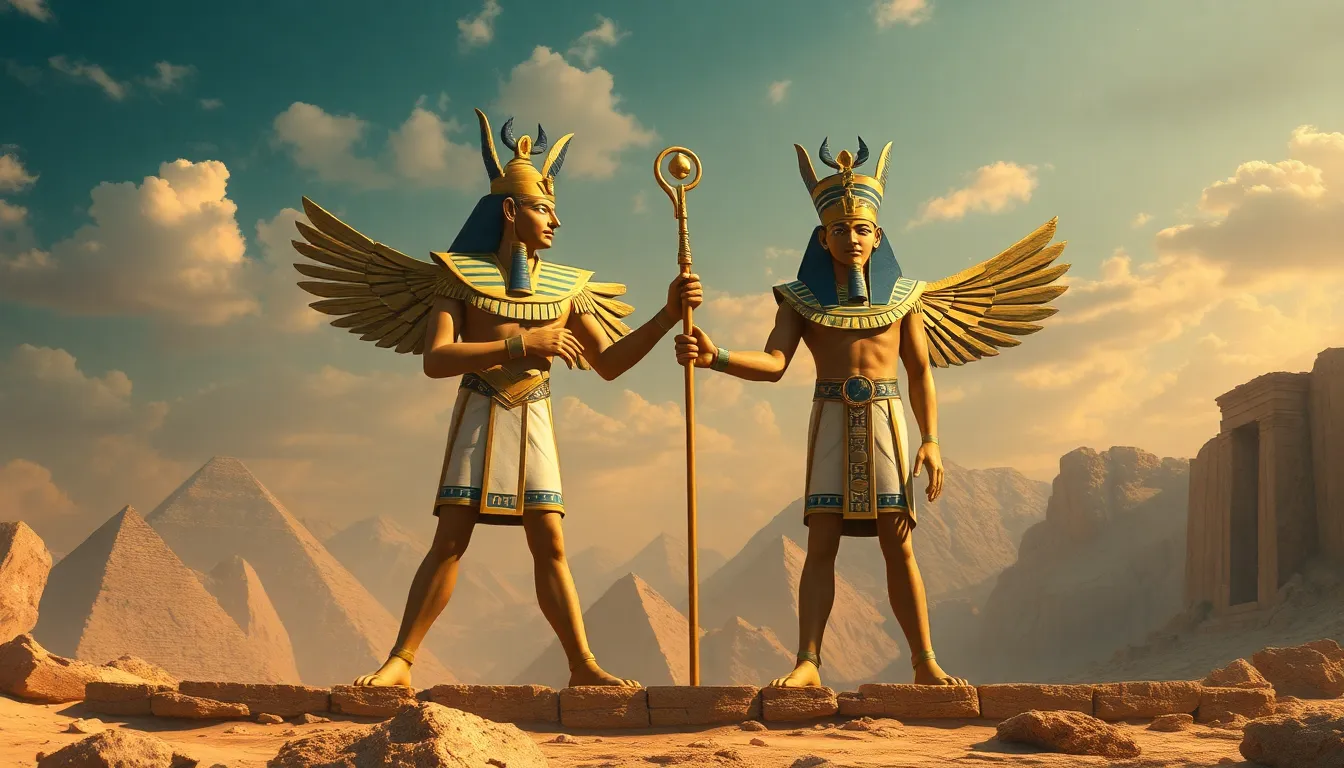Secrets of the Gods: How Egyptian Deities Formed Powerful Alliances
I. Introduction
Egyptian mythology is a rich tapestry of stories, beliefs, and traditions that formed the backbone of ancient Egyptian civilization. It provides insight into how the Egyptians viewed the world, the cosmos, and their place within it. Central to this mythology are the deities, powerful beings who personified various aspects of life, nature, and the cosmos.
The importance of these deities in ancient Egyptian society cannot be overstated. They were revered in temples, invoked in rituals, and honored in daily life. Gods and goddesses influenced everything from agriculture to governance. This article aims to explore the intricate alliances among these deities, shedding light on how their relationships shaped mythology and society.
II. The Pantheon of Egyptian Deities
The Egyptian pantheon is vast, featuring numerous gods and goddesses, each with unique roles and attributes. Some of the major deities include:
- Ra: The sun god, considered the king of the gods, representing order and creation.
- Isis: The goddess of magic and motherhood, known for her wisdom and protective nature.
- Osiris: The god of the afterlife and resurrection, symbolizing fertility and agriculture.
- Set: The god of chaos and storms, often portrayed as the antagonist in myths.
These deities operated within a structured divine hierarchy, where each had a distinct role that contributed to the overall balance of the universe. This hierarchy was essential for maintaining ma’at, or cosmic order, which was a central concept in Egyptian belief.
III. Understanding Divine Alliances
Divine alliances in Egyptian mythology refer to the relationships and collaborations between gods and goddesses. These alliances were significant as they often influenced the balance of power and the dynamics of mythological narratives.
The historical context of these alliances can be traced back to the unification of Upper and Lower Egypt, where gods were often merged or associated with one another to reflect political unity. For instance, the syncretism of deities like Horus and Ra played a crucial role in establishing the legitimacy of pharaohs, who were believed to be divine representatives on Earth.
Examples of famous divine alliances include:
- The partnership between Isis and Osiris, which emphasizes themes of loyalty and resurrection.
- The rivalry and eventual conflict between Horus and Set, showcasing the balance of good and evil.
IV. Case Study: The Osiris Myth
The Osiris myth is one of the most significant narratives in Egyptian mythology, encapsulating themes of death, resurrection, and the eternal struggle between good and evil. The main characters include Osiris, the slain god; Isis, his devoted wife; and Horus, their son.
In this myth, the alliance between Isis and Osiris is pivotal. After Set murders Osiris, Isis’s unwavering love and determination lead her to resurrect him. This act of loyalty not only restores Osiris but also establishes him as the god of the afterlife.
The formation of alliances extends to Horus, who, with Isis’s guidance, battles Set to reclaim his father’s throne. This alliance among the three deities has had a profound impact on Egyptian beliefs and rituals, emphasizing the importance of family bonds and the cycle of life and death.
V. The Role of Dualities in Alliances
In Egyptian mythology, dualities play a crucial role in shaping relationships among deities. These complementary and opposing forces create a dynamic balance that reflects the complexities of life. For instance, the relationship between Set and Horus exemplifies this duality.
Set embodies chaos and disorder, while Horus represents order and kingship. Their rivalry signifies the eternal struggle between good and evil, light and darkness. This duality has influenced various aspects of mythology and society, leading to:
- The establishment of moral codes based on the conflict between these forces.
- Rituals and festivals that celebrate the triumph of order over chaos.
VI. Political and Social Implications of Divine Alliances
Divine alliances significantly influenced pharaonic power and legitimacy in ancient Egypt. Pharaohs often aligned themselves with specific deities to bolster their authority. For example, the worship of Amun became central during the New Kingdom, reinforcing the pharaoh’s divine right to rule.
The role of religion in consolidating political authority cannot be overlooked. Temples served as centers of power where alliances between deities were celebrated, reinforcing the connection between the divine and the earthly realm.
Alliances also affected temple practices and worship, leading to:
- Rituals dedicated to specific divine partnerships, enhancing community participation in religious life.
- The establishment of priesthoods that managed the worship of allied deities.
VII. Modern Interpretations and Cultural Legacy
Today, Egyptian deities and their alliances continue to capture the imagination of people worldwide. They are often depicted in various forms of contemporary culture, including literature, film, and art. The fascination with these ancient stories reflects a lasting legacy that transcends time.
The influence of mythology on contemporary culture includes:
- Books and films that explore themes of ancient wisdom and divine power.
- Artistic expressions that reinterpret ancient symbols and stories in modern contexts.
Lessons learned from ancient alliances can also resonate today, reminding us of the importance of collaboration, loyalty, and the balance between opposing forces in our lives.
VIII. Conclusion
In conclusion, the alliances among Egyptian deities are significant not only for their impact on mythology but also for their reflections on ancient Egyptian society. These divine relationships shaped beliefs, rituals, and the very fabric of life in ancient Egypt.
As we reflect on the enduring impact of these myths, we are invited to explore further the secrets of Egyptian mythology and the powerful alliances that defined an ancient civilization.




